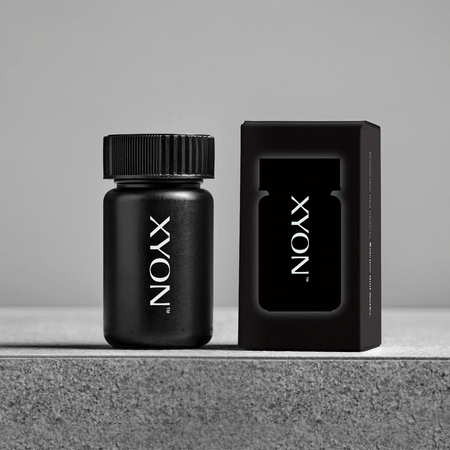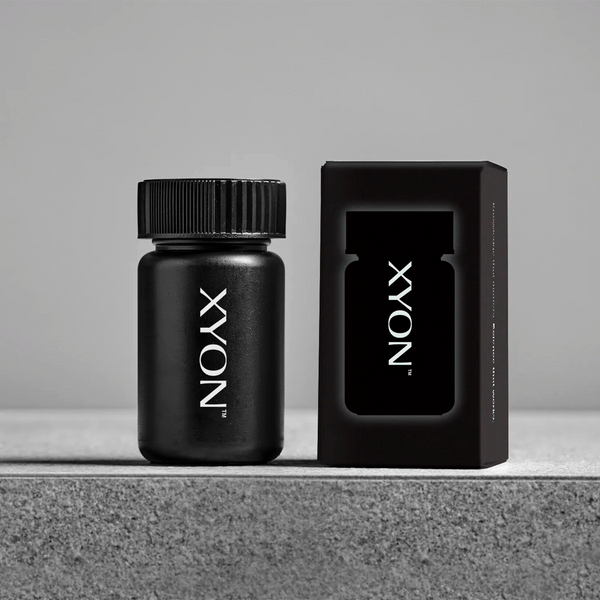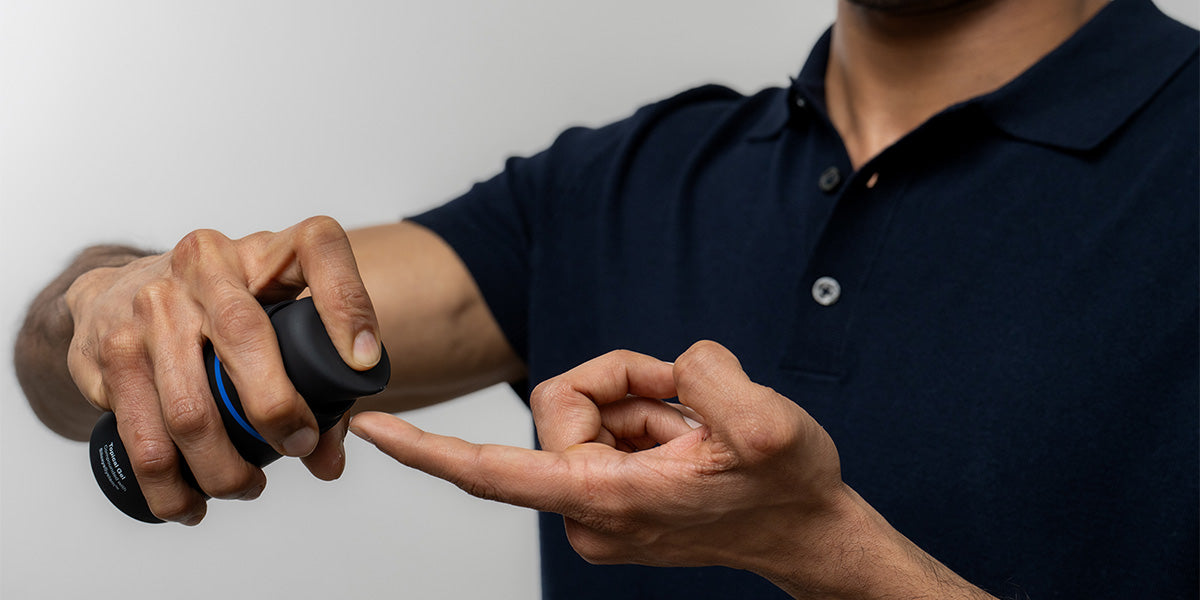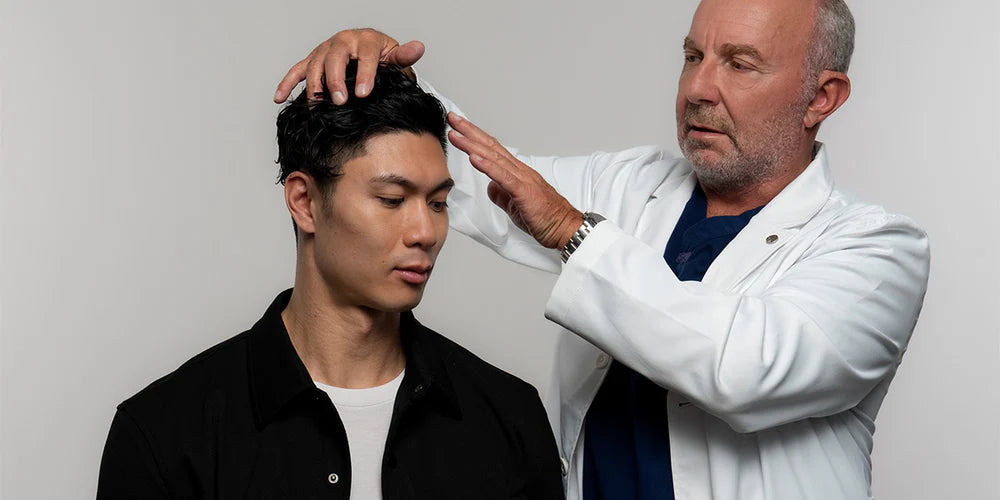What is microdosing?
If you’ve investigated hair loss treatment options, it’s possible that you've heard about microdosing finasteride or microdosing dutasteride. The basic idea is that a patient splits, cuts or otherwise dilutes their medication so that they receive a smaller “micro” dose of the treatment each time they take it.
The concept originates from the clinical trials world, where microdosing is sometimes a necessary part of testing a new medication to determine if it's going to work for a specific illness and what the right dose might be. In this context, new treatments are tested following rigorous standardized protocols to gather information on dosage and safety data. This data is then used to determine whether the medication should continue to be tested in subsequent, larger scale clinical trials.
So, should you microdose your hair loss treatment? The short answer is no. We don’t recommend microdosing hair loss medications and instead, recommend that you to follow the dosing instructions provided to you by your prescribing doctor.


XYON offers a quick and easy way to get your finasteride prescription.
Our free online intake process takes only a few minutes. Get your case reviewed by a licensed physician today.
Unlike the experimental medications discussed above, drugs like finasteride and dutasteride have been extensively studied in clinical trials, so we have information about drug toxicity, potential side effects and even pharmacokinetic and pharmacodynamic data. We know how the body responds to these medications and what effects these medications have on the body. This data helps inform dosing recommendations. At the end of the day, doctors are relying on their expertise to help recommend solutions that strike a balance between being effective and safe.
Does microdosing finasteride really lower the risk of side effects?
Not necessarily. In theory, lower doses of medications (especially if we're talking about oral medications) may be less likely to cause side effects. But if you haven’t experienced side effects, or it’s your first time taking a medication, we don’t recommend lowering your dose as a precautionary measure (without first consulting with your doctor).
It’s possible that you could be taking so little of the medication that it won’t perform its intended effect. It could take longer for you to see results, or worse yet, you might not see results at all. And while it’s true that sexual side effects are a possibility when using finasteride, not all patients will experience side effects while some will be more sensitive to its effects, regardless of how little finasteride they’re exposed to.
The reason why finasteride and dutasteride work so well is that they lower dihydrotestosterone (DHT) levels to a point where they don’t promote the progression of hair loss. They’ll help maintain these lower levels for as long as you take the medication as prescribed. That said, some patients are more sensitive to the DHT lowering effects of these medications, which makes compounded topical formulations a possible option for those who are worried about side effects. A delivery system like SiloxysSystem™ Gel is designed to limit how much medication is absorbed into the bloodstream, making it a potentially safer way to take finasteride and dutasteride.
It makes sense for patients to want to limit unnecessary exposure to medications, since higher absorption can correlate with a higher risk of systemic side effects. But how much to lower the dosage by should take into consideration what’s needed to achieve a good clinical result.
Microdosing topical finasteride
Should you microdose a topical treatment? There is little to no evidence that microdosing topical finasteride or topical dutasteride improves the safety profile of these treatments. There are a few small-scale trials that have tested lower concentrations of these medications in various bases, but because these formulations are vastly different from each other, halving or quartering your dose doesn’t necessarily mean that you’re receiving the corresponding amount of treatment. A gel doesn’t administer medication the same way a spray does.
Unlike other topical bases, SiloxysSystem™ Gel is not easily dilutable with water. It’s important for our patients to understand that the gel itself has been designed to help control medication absorption. We’ve also chosen the pump for our bottles based on its ability to deliver an exact amount of treatment, every time. So, neither the gel nor the container the treatment comes in are designed for microdosing. If you’re concerned about side effects of topical hair loss treatments, we recommend consulting with your doctor. They may be able to make recommendations for dosing frequency that further minimize your risk or guide you in the direction of an alternate treatment.
What's the right dose of finasteride for hair loss?
The FDA and Health Canada have approved oral finasteride at a dose of 1 mg for the treatment of pattern hair loss in men. This doesn’t mean that it’s the only dosage that could work, but it’s what regulatory agencies have endorsed based on the results of extensive clinical trials and investigations into finasteride’s safety and efficacy. Keep in mind that these regulatory approvals are for a given format of the medication and population being treated.
There have been smaller scale studies that have examined the safety and efficacy of other formats and concentrations of finasteride and you’ve probably noticed a rise in the popularity of topical formulations of finasteride. When comparing the data that comes out of these studies, we need to keep in mind study designs can vary greatly and results may not necessarily be generalizable.
In the case of oral finasteride, 1 mg remains the most used dosage for hair loss, while for topical finasteride, concentrations ranging from 0.005%-3% have been explored with varying results (Lee et al., 2018). In addition to the strength of finasteride being used, it’s important to take into consideration the vehicle, or base used in the investigational treatment. Some of these are alcohol based, others are delivered via spray mechanism. The key takeaway is that the effective concentration of finasteride depends not only on the amount of finasteride being used, but how it's being delivered.
Many people ask us how we decided on our concentrations of topical finasteride and topical dutasteride compounded in SiloxysSystem™ Gel. You can read more about the clinical studies conducted on these treatments by visiting our articles in the XYON medical library but know that these were selected for a reason: to balance safety and efficacy. Just because something is a higher concentration doesn’t mean that it will work better, in the same way that something that is a lower concentration is necessarily safer.
The bottom line on microdosing hair loss treatment
At XYON, we put emphasis on making sure that anyone interested in having their hair loss assessed and treated is seen by an expert in the field. We also pride ourselves on formulating treatments and non-medicated products that deliver results and ensuring that all our patients have a safe experience using our offerings. While we can’t control what people decide to do in the privacy of their homes, our recommendation has always been that you should follow your prescribing doctor’s instructions when it comes to dosing. It’s one way you can help us help you and increase the chances of your treatment being successful.
References List
Lee, S., Juhasz, M., Mobasher, P., Ekelem, C., & Mesinkovska, N. (2018). A Systematic Review of Topical Finasteride in the Treatment of Androgenetic Alopecia in Men and Women. Journal of Drugs in Dermatology, 17(4), 457-463.




